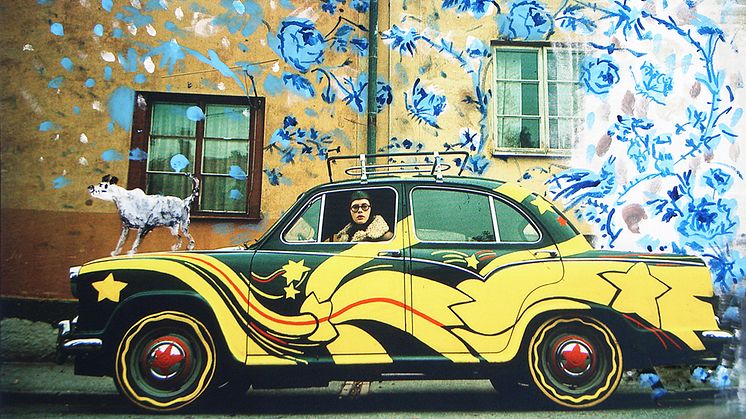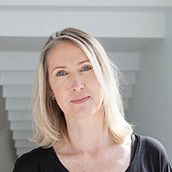
Press release -
Opening at Bildmuseet: Carl Johan De Geer / The Big Misconception
Creative, provocative and brilliantly versatile, Carl Johan De Geer has been working as an artist, designer, film-maker, photographer, stage designer, cultural journalist, musician and author since the early 1960s. However, he originally wanted to be a textile designer.
The Big Misconception presents Carl Johan De Geer’s textile work. Textiles, test prints, pattern sketches and photographs from the early 1960s to the early 2000s have been lent to Bildmuseet from museums and private collections. The exhibition is produced by Bildmuseet and is put together in collaboration with the artist.
Join us for a press viewing on Thursday 11 April at 10:00. Curator Brita Täljedal will be there to welcome you, and the artist Carl Johan De Geer will give a presentation. Please RSVP before Monday 8 April to: helena.vejbrink@bildmuseet.umu.se.
As an ingenious pattern designer, radical artist, author and fashion photographer, Carl Johan De Geer (b. 1938) took his place on the Swedish art and design scene as early as the 1960s. He gained attention with his social satire and politically provocative posters, was one of the founders of Ten Swedish Designers and played the trombone in the band Blå Tåget. He has made films and TV productions, designed stage sets, taken photographs and produced illustrations for newspapers and magazines, and written novels.
But everything started with textiles. After having studied graphic design at Konstfack between 1959 and 1963, De Geer started creating large-patterned, imaginative expressive prints in bold colours and with strong contrasts. These fabrics were a total departure from the drab, grey discrete ideals of the time, and for De Geer they were a revolt against the aesthetic values of his upbringing. He wanted to confront previous generations’ bourgeois conservative aesthetics with design and colours, but he also wanted to influence society as a whole.
“It goes together with an idea we had at the time: that it was possible to create a new and better world with no war using patterns, bold colours and music. A misconception. [….] My fall was great when I painfully discovered that there was little interest in my patterns. Very few people wanted to buy them. I had my own shop, combined with a small textile printing workshop. When the truth hit me, I lost that ability to make patterns out of anything in no time at all. And I started making a living as a photographer instead. My textile printing workshop had to be shut down.”
Carl Johan de Geer / The Big Misconception runs from 12 April – 15 September, 2019
Press preview: Thursday11 April at 10 AM. The artist is participating.
Press images: http://www.bildmuseet.umu.se/press-images
Opening: Art Friday 12 April at 5–9 PM. Opening talks at 7 PM, Carl Johan De Geer is participating. The exhibition is inaugurated by artist Marie-Louise Ekman.
For further information, please contact
Museum curator Brita Täljedal, Bildmuseet
brita.taljedal@bildmuseet.umu.se, +46 90-786 7714
Topics
Categories
Bildmuseet exhibits contemporary international art, photography, architecture, design and other forms of visual culture. Housed in an acclaimed building at the Umeå Arts Campus, right next to the Umeå Academy of Fine Arts, Umeå Institute of Design and Umeå School of Architecture, Bildmuseet is a part of Umeå University – one of Sweden's largest institutions of higher learning with over 32,000 students and 4,200 employees. It is a multifaced university where studies and research within the creative realm make up an important part of the universty's cornerstone.

